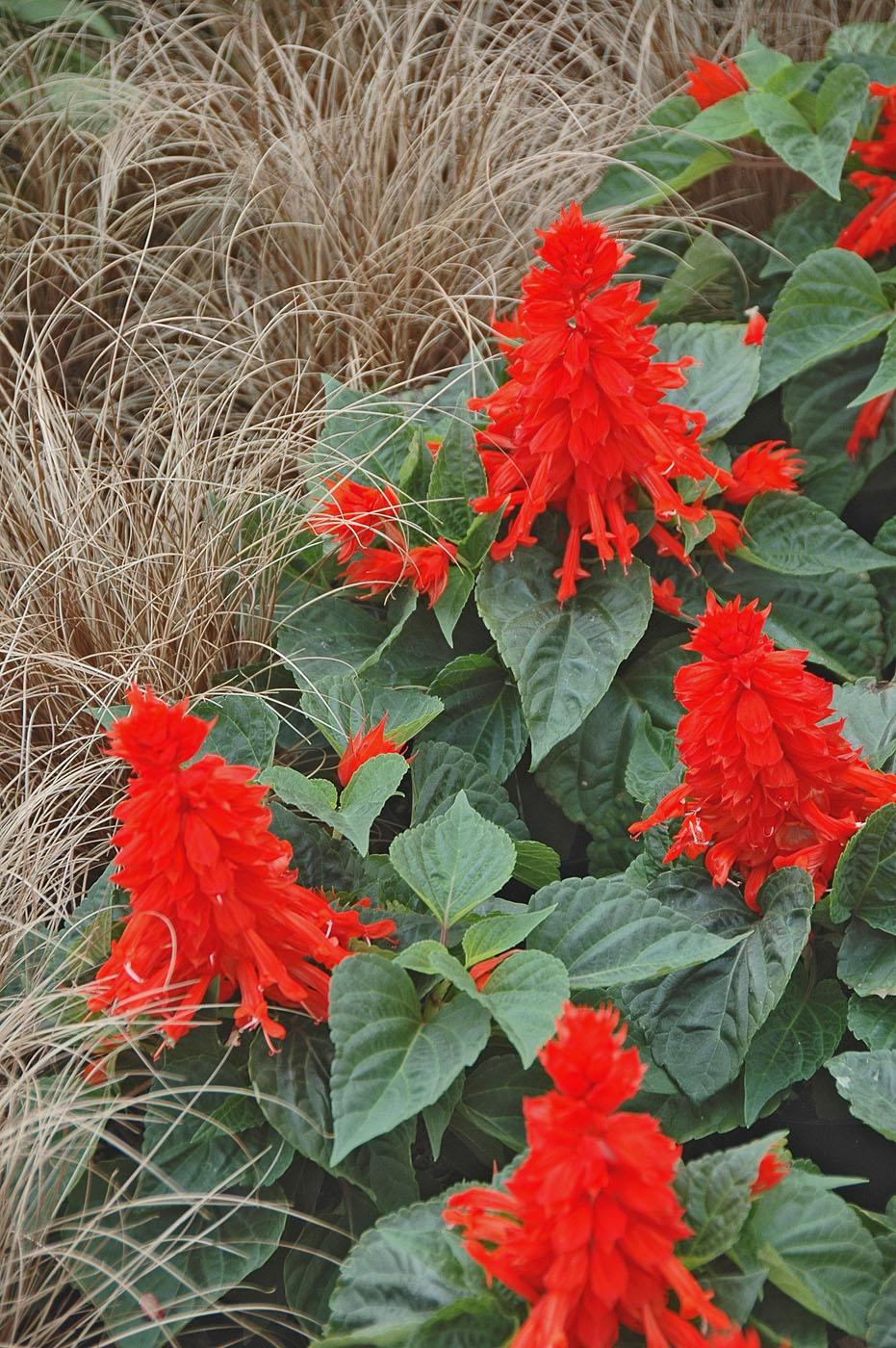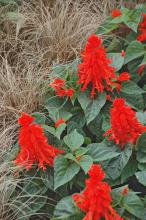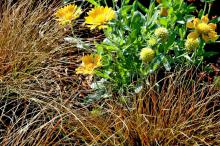Information Possibly Outdated
The information presented on this page was originally released on September 4, 2008. It may not be outdated, but please search our site for more current information. If you plan to quote or reference this information in a publication, please check with the Extension specialist or author before proceeding.
Sedges give texture and beauty to landscape
By Norman Winter
MSU Horticulturist
Central Mississippi Research & Extension Center
Words like bronze, copper, orange and toffee describe a great group of plants that will really strut their stuff in the next few weeks. They look pretty doggone good the entire gardening season, but the grass-like plants we call sedges hold great promise for cool-season landscapes.
Botanically speaking, the sedge is known as Carex. One that has done incredibly well in our Mississippi State University trials is the orange sedge Carex testacea. This plant is cold hardy in zones 7-10 and treated as an annual elsewhere.
The grass-like foliage begins olive green and then turns orange in the fall. It reaches about 18 inches tall in our garden. We partnered it with Oranges and Lemons gaillardia that is great in bloom and has attractive, globe-like seedpods.
The one we are growing came in generic form, and that is how you may find it, too. Keep your eyes open for named selections like Prairie Fire.
Like the orange sedge, the variety called Bronzita is also from New Zealand. It is known botanically as Carex flagellifera, and it reaches a little more than 12 inches tall. The name gives a clear clue about its toasty, copper-bronze color. When growing this sedge, you may think it has succumbed to high temperatures and no water, but it is alive and thriving. It spreads to about 24 inches and makes a great partner for the fall look. It is cold hardy to zone 6.
In addition to Bronzita, look for the popular Toffee Twist that is reported to reach a little taller and more upright before arching or twisting over. While I think this sedge is absolutely superb, my wife calls it dead grass.
Another variety is the new Red Rooster. This is much taller and more upright and grows in a 24- to 30-inch-tall clump. It arches slightly and curls at the tips. Like the others, it is from New Zealand and is known as Carex buchanii with the common name Leatherleaf sedge.
You will not believe how many types of sedges are available in the market. I've just mentioned a few with orange or copper colors. There are sedges with green and white variegation like the new Amazon Mist and the Silk Tassel that looks like thread or maybe even hair.
The last one I want to mention is Lemon Zest. With the lime green color soaring in popularity, this sedge could top the charts. It is from China and will bring extraordinary color to the woodland or filtered-light garden.
Pay attention to sunlight needs as the bronze ones I've mentioned can take sun to part sun while some of the others like a little more shade. Most prefer fertile, organic-rich soil that drains quickly. It will pay dividends to work in 3-4 inches of organic matter like peat, compost or humus.
Sedges work in rock gardens, near water gardens or as those special “look at me” textural plants for the flower border. Use them in mixed containers, too.




